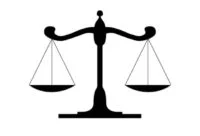Table of Contents ![]()
Perfect Competition: Definition, Examples & Characteristics
What is Perfect Competition
Perfect Competition is a type of market structure where many firms sell similar products and profits are virtually non-existent due to fierce competition. With that said, it is important to realise that perfect competition is an abstract term used to compare against real life markets.
Although perfect competition is based on a number of assumptions, that in reality, rarely exist – there are some close examples. These assumptions include many competing firms, with similar products, similar market share, with buyers having full information, and firms able to easily enter and exit the market. Whilst some of these exist, they rarely do in the real-world at the same time.
Key Points
- Perfect competition is a type of market structure where products are homogenous and there are many buyers and sellers.
- It is held as the ideal market structure for economies to operate in.
- Whilst perfect competition does not precisely exist, examples include the likes of agriculture, foreign exchange, and online shopping.
Perfect competition is also known as ‘pure competition’. It emphasizes the fact that it is an idealized concept rather than a reality. In fact, the term ‘pure’ highlights how a market would be in an ideal world. It provides customers with low prices, many choices, and high levels of competition.
Characteristics of Perfect Competition
There are five key characteristics of perfect competition, which are:
- Many Competing Firms
- Similar Products Sold
- Equal Market Share
- Buyers have full information
- Ease of Entry and Exit
When these characteristics are seen in the market, we can consider it perfectly competitive. Let us look at them in more detail below.
1. Many Competing Firms
A perfectly competitive market has many buyers and sellers. This means that firms are known as ‘price takers’. In other words, the firm must sell at the ‘equilibrium’ price – this is where the firm sells when supply and demand align. If not, they will go out of business, as there are many other firms that sell the same good at a lower price. As a result, customers have little cost of switching to a substitute good.
The number of competitors in the market means that each company is prevented from raising prices. If they do, then they will be forced out of the market as consumers are able to switch to cheaper alternatives.
2. Similar Products Sold

In perfect competition, competitors sell similar products. This is otherwise known as ‘homogenous’ – in economic jargon. In simple terms, it means the products are similar.
Individual businesses may be indistinguishable to the average customer. As a result, the ability and willingness to switch is easy and costless.
Dairy is a notable example. For instance, many farmers sell milk to supermarkets, but the product is very similar. In fact, supermarkets change contracts with dairy producers without customers even noticing.
3. Equal Market Share

Competitors all have a similar market share because firms are unable to compete on price. As firms produce where Marginal Revenue = Marginal Cost, there is no room to reduce prices.
If a firm was to reduce prices, it would start making a loss – because it costs more to make than sell, meaning it would go out of business. At the same time, if any firm increases prices, there is enough competition to attract customers from that store and put them out of business. In turn, this puts a restriction on a firms ability to gain market share.
4. Buyers have full information
In economic jargon, we call this ‘Perfect Information’. This is where the customer knows that the business down the road sells the same product at a lower price. As a result, businesses are reluctant to raise prices ahead of a competitor.
Furthermore, customers are also aware of the quality of a product. For instance, one firm may reduce costs to provide a lower quality product and make more profit. Since customers have perfect information, they will know the product is inferior. In turn, they will switch to competitors – putting the original firm out of business.
5. Ease of Entry and Exit

Firms can enter and exit the market with little cost. This can come in the form of financial, time, or information. For instance, the oil and gas industry requires a high level of up-front investment. As such, this is a barrier to entry for competitors. Under perfect competition, these costs do not exist or are in fact insignificant.
Additionally, firms are able to exit the market with ease under perfect competition. For example, a firm may have a long-term contract. But they are unable to leave the market without significant costs.
Perfect Competition Examples
It is often stated that perfect competition does not actually exist in the real world. To a certain extent, this proposition is right. For instance, perfect competition may have existed in previous centuries when commodities were the main source of economic activity. In particular, coal, oil, metal, and corn were all major parts of the economy. At the same time, they were homogenous and met the 5 characteristics.

If we go back centuries to old fashioned markets, we would find many buyers and many sellers of the same product. For example, there may be many bakers who come to the market to sell loaves of bread. A homogenous product, with large numbers of buyers and sellers that can enter or exit the market.
Times have changed. We now live in an economy where firms compete by offering different products.
Customers now rely on brands as a form of obtaining information. ‘Perfect information’ is not actually achievable because of how many products we buy.
In prior centuries, ‘perfect information’ was easier to get because so few products were available. Yet today, there are millions. With that said, there are a few notable examples that still exist today; although they are rare.
1. Agriculture:
In this market, products are very similar. Carrots, potatoes, and grain are all generic, with many farmers producing them. As the product is homogenous, it is easy to buy some land and farm it. Additionally, it is also easy to leave the market too. So the market has key signs of perfect competition.
2. Foreign Exchange Markets:
In this market, traders exchange currencies. As there is only one US Dollar, one Great British Pound, and one Euro, the product is homogenous. Additionally, there are many sellers and buyers in the market. Furthermore, it is easy to buy some currency, and easy to sell it too.
With that said, there is an exception in the fact that traders may not have ‘perfect information’. Normal buyers and sellers may be at a disadvantage compared to professional traders who do it for a living. Even so, it is one of the closest examples of perfect competition we can find today.
3. Online shopping:
We may not see the internet as a distinct market. However, the internet is home to many buyers and many sellers. For instance, we only need to look at eBay as an example. In fact, this is exactly what a market is although not on a physical level.
The internet allows customers to compare and gather ‘perfect information’ on a product. Consider a specific book: there are many buyers and many distributors. In this case, it may include Amazon, Waterstones, or Barnes & Noble. At the same time, there are generally little differences in price.
So there are many buyers and sellers selling similar products. Furthermore, entry and exit is easy with low costs. Whilst companies such as Amazon have a strong market share, it is as close to a real-life example as any.
4. Street Vending:
Street vending typically involves people selling goods in public. In places such as New York, this is a highly competitive market. Each stall tends to have similar products. Perhaps its hot dogs, pretzels, or bagels. They are all small vendors competing fiercely for market share.
Perfect Competition FAQs
Some examples of perfect competition include Agriculture, Foreign Exchange, Online Shopping, and Street Vending.
Perfect Competition is characterized by 5 variables:
– Many Competing Firms
– Similar Products Sold
– Equal Market Share
– Buyers have full information
– Ease of Entry and Exit
Pure competition is commonly referred to as Perfect Competition and is generally defined by many competing firms that sell similar products. Within pure competition, each firm holds a relatively equal share, with new competitors being able to easily enter the market.
Further Reading
 How is Inflation Measured - So now we have looked at what money essentially represents, let us look at how inflation is measured. Inflation is…
How is Inflation Measured - So now we have looked at what money essentially represents, let us look at how inflation is measured. Inflation is…  Economic Efficiency - Economic efficiency refers to the optimal allocation of resources to maximize overall welfare or output.
Economic Efficiency - Economic efficiency refers to the optimal allocation of resources to maximize overall welfare or output.  Supply Chain Management: Definition, How it Works & Example - Supply chain management is the management of goods and services that a business needs to turn raw materials into the…
Supply Chain Management: Definition, How it Works & Example - Supply chain management is the management of goods and services that a business needs to turn raw materials into the… About Paul
Paul Boyce is an economics editor with over 10 years experience in the industry. Currently working as a consultant within the financial services sector, Paul is the CEO and chief editor of BoyceWire. He has written publications for FEE, the Mises Institute, and many others.

